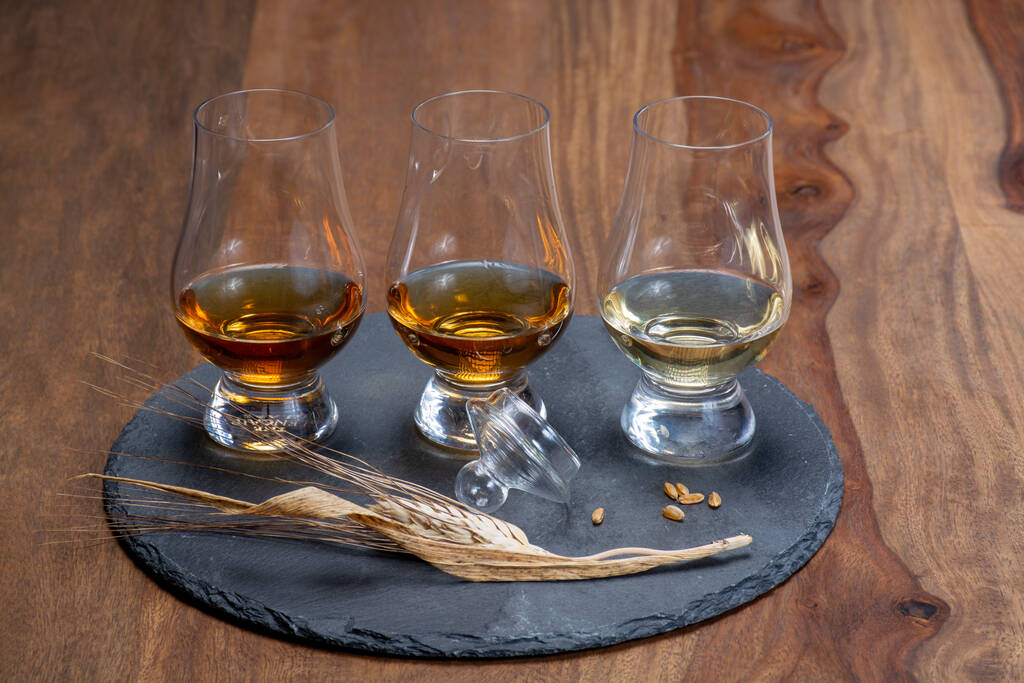
Discovering the Rich Flavor: A Comprehensive Guide to Scotch Whisky
- 0
Brief History of Scotch Whisky
Scotch whisky, often simply referred to as scotch, has its roots in medieval Scotland. A document from 1496 indicates that the production of whisky was already standard practice. Originally dubbed ‘aqua vitae,’ or ‘water of life,’ scotch evolved significantly over the centuries. By the 18th century, commercial distilleries were prevalent and, despite legal restrictions over the years, scotch whisky has remained a valuable export and icon of Scotland. Today, it is globally celebrated for its unique taste and character.
Importance of Scotch Whisky in Scottish culture
Scotch Whisky is deeply integrated into Scottish culture. It is not just a tasteful spirit, but it reflects Scotland’s heritage and tradition. Its meticulous production process, from distillation to maturation, is a symbol of Scottish craftsmanship and quality. Besides its significant contribution to Scotland’s economy, it brings people together, offering a sense of community and camaraderie. Each region’s distinct Scotch flavour profiles mirror the diversity of the Scottish landscape, thus making Scotch Whisky an intrinsic part of Scottish identity.
Understanding What Makes a Scotch Whisky
Scotch Whisky, commonly known as Scotch, is a distilled spirit made exclusively in Scotland. The key criteria of Scotch Whisky include being produced at a distillery in Scotland from water and malted barley, matured in oak casks for at least three years, and maintaining a minimum alcoholic strength by volume of 40%. Furthermore, its label must explicitly state the type of Scotch whisky it is, such as “single malt”, “blended malt”, “single grain” or “blended grain”.
Distinction between Scotch Whisky and other types of whiskies
Scotch whisky, often simply referred to as Scotch, is a distinctive type of whisky that originates from Scotland. Unlike American whiskies which can be made from different kinds of grains, Scotch is typically made from malted barley. It’s also characterized by its ageing process, with Scotch being aged in oak barrels for a minimum of three years. Furthermore, Scotch often possesses a smoky flavour due to the peat used in the malting process, a taste generally absent from other types of whiskies.
Geography of Scotch Whisky
Role of Scotland’s geography in flavour
Scotland’s geography plays a pivotal role in shaping the flavour profiles of its food and drinks. The highlands provide unique vegetation eaten by sheep, lending a distinct taste to Scottish lamb. Coastal regions offer a variety of fresh seafood influenced by the North Sea’s cold temperature. The region’s peat bogs, used for malt drying, produce Scotland’s renowned smoky Scotch whisky. Furthermore, clean rivers and rich soils yield high-quality grains and produce, contributing to Scotland’s unique culinary palette.
Different whisky-producing regions of Scotland
Scotland is renowned for its diverse whisky production regions, each imparting a unique flavour profile. The Speyside region, known for its smooth, sweet, and fruity whiskies, boasts the largest number of distilleries. The Highland region offers a wider variety, from dry to sweet, some with a touch of smoke. Islay whiskies are intensely peaty and smoky. Finally, the Lowland region produces lighter whiskies, often with a hint of citrus. Each region contributes uniquely to Scotland’s acclaimed whisky landscape.
Types of Scotch Whisky
Description and Characteristics of Single Malt
Single Malt is a type of whisky that originates from a single distillery. Made exclusively from malted barley and distilled using a pot still, its flavour profile often reflects the region where it’s produced. Generally, Single Malts are known for their complexity and richness, with flavours ranging from sweet and fruity to rich and smoky. They have a golden hue, usually aged in oak barrels for a minimum of three years, which augments the inherent flavour and imparts a unique character to the whisky.
Description and Characteristics of Single Grain
Single Grain Whiskey, often misunderstood, is a spirit distilled from various grains such as corn, barley, rye, or wheat. Unlike single malt which only uses barley, single grain incorporates different grains at a single distillery. The result is a smoother, lighter, and mildly sweet spirit. It is typically aged in oak barrels which provide it with rich flavors of vanilla and toffee. Comprising the majority of many blended whiskies, single grain remains an underappreciated standalone choice, offering its distinct characteristics and benefits.
Description and Characteristics of Blended Malt
Blended Malt whisky is a blend of single malts from two or more separate distilleries. It delivers a harmonious, complex flavour profile that is unique from its components. This type of whisky exhibits diversity in taste due to the combination of different malts. Whereas single malts highlight the distinct flavours of one distillery, blended malts offer a balanced composition, marrying the individual characteristics of each malt for a more rounded, layered drinking experience.
Description and Characteristics of Blended Grain
Blended Grain is a combination of diverse types of grains that offer a range of flavours, textures, and nutritional benefits. It typically includes wheat, barley, maize, rice, or oats. Not only is this mix high in dietary fibre and proteins, but it also provides an array of vitamins, minerals, enzymes and antioxidants. Its mild and slightly nutty flavour, often enhanced when cooked, pairs well with various dishes, making it a versatile ingredient in global cuisine.
Description and Characteristics of Blended Scotch Whisky
Blended Scotch Whisky is a harmonious blend of malt and grain whiskies sourced from various distilleries across Scotland. Known for its rich, smooth, and versatile flavour profile, it embodies a harmonious balance of diverse characters and tastes. It undergoes a meticulous ageing process, usually three years or more, in oak barrels, which bestows it with a deep golden colour, complex aroma, and a subtly smoky finish. Its quality and consistency elevate its standing in the realm of spirits.
How to taste and appreciate Scotch Whisky
Properly tasting Scotch involves specific steps. Start by examining the colour, as it may provide a clue about the cask used during the maturing process. Next, swirl the scotch gently in the glass to release its various aromas and take a good sniff. Then, take a small sip, and let it coat your palate before swallowing. Pay attention to the flavours that come forward and the smoothness of the liquor. Finally, analyze the finish, and how long the taste lingers after swallowing. These steps offer the full breadth of the Scotch’s appeal.
Pairing Scotch Whisky with Foods
Different flavour profiles in scotch whisky
Scotch whisky comes in varied flavour profiles, reflecting the regions where they’re distilled. Speyside whiskies, for instance, are generally sweet and fruity, with hints of apple and vanilla. The Islay whiskies are renowned for their robust peaty and smoky flavour, while Highlands offers a broad spectrum, from peaty and smoky to light and floral. The Lowlands whiskies are typically light-bodied, grassy, and slightly sweet. Each Scotch whisky delivers a unique tasting experience.
Responsible Drinking of Scotch Whisky
How to enjoy Scotch whisky responsibly
Enjoying Scotch whisky responsibly involves moderation and understanding. Start by selecting a quality Scotch that suits your taste. Sip it slowly, allowing the complex flavours to reveal themselves. Never drink on an empty stomach, as this can intensify the alcohol’s effects. Limit your intake to avoid overconsumption. Don’t pressure others to drink, and never drink and drive. If you’re new to Scotch, remember, it’s not about getting drunk but appreciating the craftsmanship behind each bottle. Drink Responsibly!







